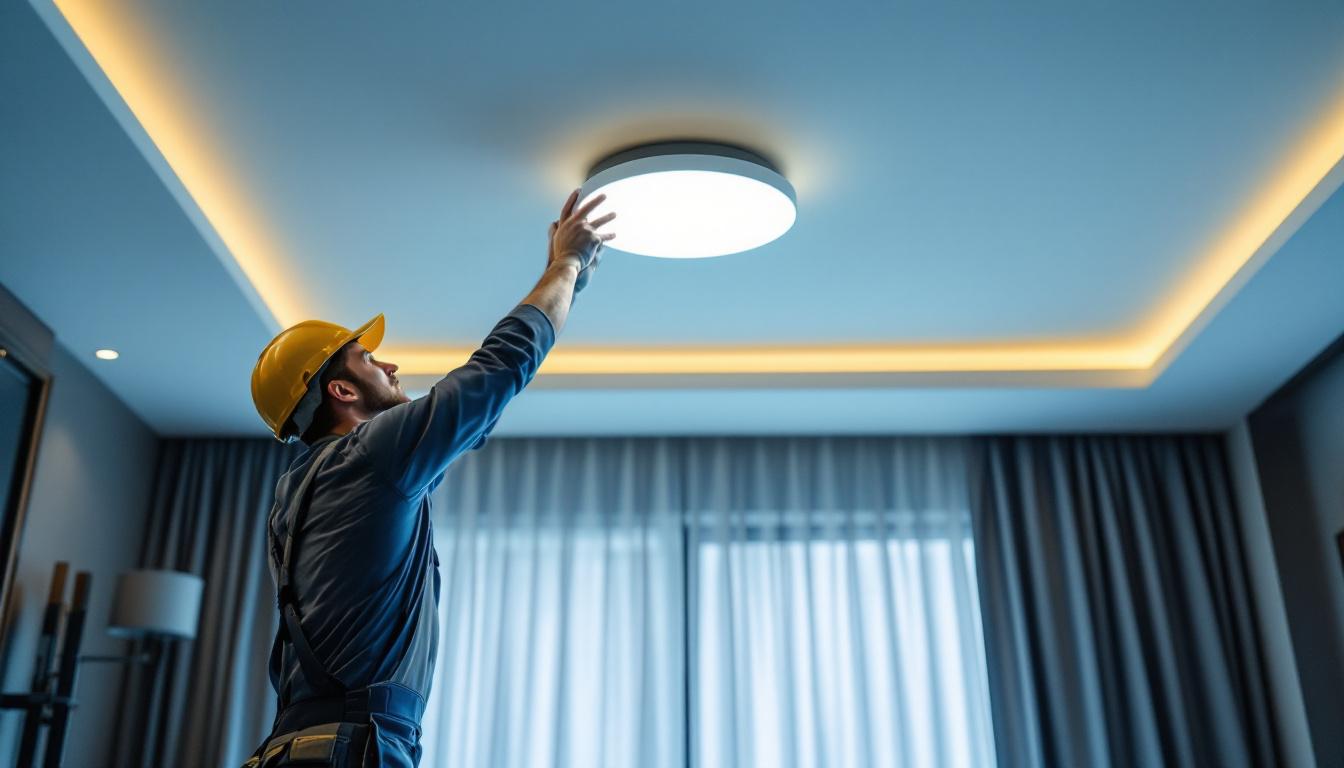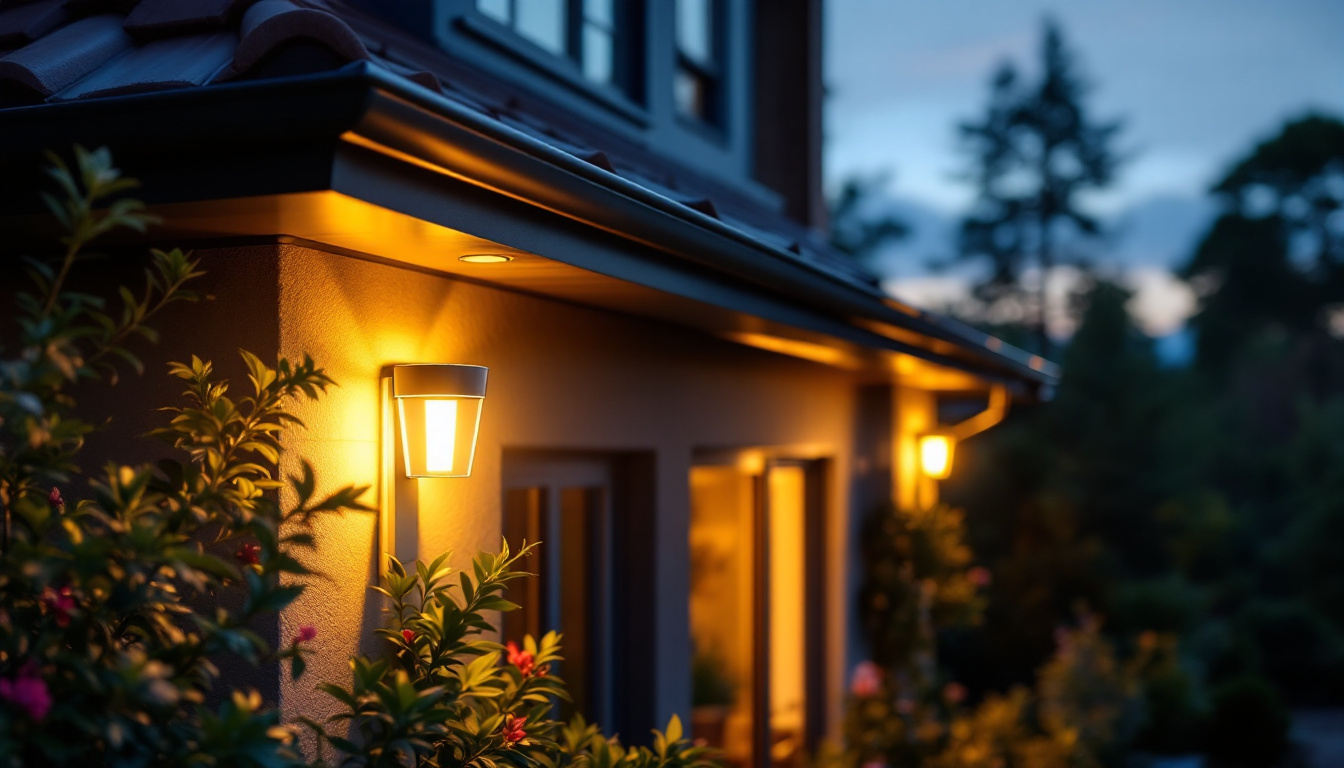
In the world of interior design and architecture, lighting plays a crucial role in enhancing the aesthetics and functionality of spaces. For lighting contractors, mastering the art of ceiling lights is essential for delivering exceptional results to clients. This article delves into the various aspects of ceiling lighting, providing insights and tips that can help contractors elevate their craft.
Ceiling lights are not just functional fixtures; they are integral to the overall ambiance of a room. They come in various forms, including flush mounts, pendants, chandeliers, and recessed lighting. Understanding the different types and their applications is fundamental for any lighting contractor. Beyond mere illumination, ceiling lights can enhance the aesthetic appeal of a space, drawing attention to architectural details and creating a welcoming atmosphere.
Each type of ceiling light serves a unique purpose and can dramatically alter the perception of a space. Flush mounts are ideal for low ceilings, providing a clean and unobtrusive look. They are often chosen for hallways and bedrooms where headroom is a concern. Pendants, on the other hand, can create focal points and add character, especially in dining areas or kitchens. These fixtures can be hung at varying heights to create visual interest and can be clustered for a more dramatic effect. Chandeliers are often used in formal settings, offering elegance and grandeur, and they come in a plethora of styles, from classic crystal designs to modern geometric shapes, allowing for personal expression in design.
Recessed lighting is another popular option, providing a sleek appearance while allowing for flexibility in design. It can be used to highlight architectural features or artwork, making it a versatile choice for many contractors. Additionally, recessed lights can be installed with dimmers, providing the ability to adjust the mood of a room effortlessly. This adaptability makes them a favorite among homeowners looking to create a multi-functional space that can transition from bright and lively to soft and intimate with ease.
When selecting ceiling lights, contractors must consider the specific needs of the space. Factors such as ceiling height, room size, and the intended use of the area can influence the choice of lighting. For example, a large living room may benefit from a combination of chandeliers and recessed lights to create layers of illumination. This layered approach not only enhances functionality but also adds depth to the room, making it feel more inviting and dynamic.
Additionally, the style of the room should guide the selection process. Modern spaces may call for sleek, minimalist designs, while traditional settings might be better suited for ornate fixtures. Understanding the client’s vision and the overall design scheme is crucial in making the right choices. Furthermore, energy efficiency is becoming an increasingly important consideration in lighting design. Many contractors are now opting for LED fixtures that not only reduce energy consumption but also come in a variety of designs and color temperatures, allowing for customization without compromising on sustainability. This trend reflects a growing awareness of environmental impact and the desire for long-lasting solutions in home design.
Proper installation of ceiling lights is vital for both safety and aesthetics. Lighting contractors must be well-versed in the best practices for installing various types of fixtures. This includes understanding electrical requirements, securing fixtures appropriately, and ensuring that the lighting is level and aligned. A well-executed installation not only enhances the visual appeal of a space but also contributes to the functionality of the lighting, allowing homeowners to enjoy their environments fully.
Before installation, it is essential to assess the electrical system of the building. This involves checking the circuit capacity and ensuring that it can handle the additional load of new fixtures. Contractors should also be familiar with local building codes and regulations to ensure compliance. Additionally, they must consider the type of bulbs being used, as LED lights, for instance, have different power requirements compared to traditional incandescent bulbs. This knowledge helps in making informed decisions that can prevent future electrical issues.
Using the right wiring and connectors is crucial for safety. Contractors should always prioritize quality materials and follow manufacturer guidelines to prevent issues such as flickering lights or electrical shorts. It is also advisable to install a dedicated circuit for high-wattage fixtures, which can help in managing the load effectively and reduce the risk of tripped breakers. Furthermore, implementing surge protection can safeguard the lighting system from voltage spikes, ensuring longevity and reliability.
Different ceiling lights require different mounting techniques. Flush mounts typically attach directly to the ceiling, while pendant lights may require additional hardware for suspension. Chandeliers often need a more robust support system due to their weight. When installing these fixtures, it is important to assess the ceiling type—whether it’s drywall, plaster, or a drop ceiling—as this can influence the mounting method and the type of anchors needed for secure attachment.
For recessed lighting, proper placement is key. Contractors should ensure that fixtures are evenly spaced and positioned to provide optimal illumination without creating harsh shadows. This attention to detail can significantly enhance the overall lighting design. Additionally, considering the color temperature of the bulbs can impact the ambiance of the room; warmer tones can create a cozy atmosphere, while cooler tones can lend a more modern and vibrant feel. Incorporating dimmer switches can also add versatility, allowing homeowners to adjust the lighting according to their needs and preferences, further enriching the space’s functionality.
The aesthetic appeal of ceiling lights can greatly influence the atmosphere of a room. Contractors should consider how the chosen fixtures complement the interior design and contribute to the overall theme of the space.
Color temperature plays a significant role in the mood of a room. Warmer tones can create a cozy and inviting atmosphere, while cooler tones may lend a more modern and energetic feel. Contractors should educate clients on the impact of color temperature and help them make informed decisions based on the desired ambiance.
Brightness is another critical factor. Using dimmable fixtures can provide flexibility, allowing clients to adjust the lighting according to their needs. This feature is particularly valuable in multipurpose spaces where lighting requirements may vary throughout the day.
Layering light is an effective technique to create depth and interest in a space. By combining different types of ceiling lights with other lighting sources, such as floor lamps and wall sconces, contractors can achieve a well-balanced illumination scheme.
Incorporating accent lighting can highlight specific areas or features within a room, such as artwork or architectural details. This approach not only enhances the visual appeal but also adds functionality to the lighting design.
In today’s environmentally conscious market, energy efficiency is a key consideration for lighting contractors. Clients are increasingly seeking sustainable options that reduce energy consumption while maintaining quality and performance.
LED lights have revolutionized the lighting industry, offering a long-lasting and energy-efficient alternative to traditional incandescent bulbs. Contractors should be well-informed about the various LED options available, including color temperatures and brightness levels, to provide clients with the best solutions.
In addition to being energy-efficient, LED fixtures often come with advanced features such as smart technology integration, allowing for remote control and automation. Educating clients about these options can enhance their overall satisfaction and promote sustainability.
Proper disposal of old fixtures and bulbs is essential for minimizing environmental impact. Contractors should be aware of local recycling programs and guidelines for disposing of hazardous materials, such as fluorescent bulbs. By promoting responsible disposal practices, contractors can position themselves as environmentally conscious professionals.
The lighting industry is constantly evolving, with new trends emerging that reflect changing design preferences and technological advancements. Staying updated on these trends is vital for lighting contractors looking to remain competitive.
Smart lighting technology has gained immense popularity, offering homeowners increased control over their lighting environments. Contractors should familiarize themselves with smart lighting systems that allow for customization and automation, such as programmable schedules and remote access via mobile apps.
Integrating smart technology into ceiling lighting can enhance user experience and provide added convenience. Contractors who can offer these solutions are likely to attract a tech-savvy clientele.
Minimalist and industrial design trends have influenced ceiling light styles, favoring clean lines and functional aesthetics. Fixtures that embrace simplicity and raw materials, such as metal and glass, are in high demand.
Contractors should explore unique designs that align with these trends while still meeting the functional needs of their clients. Offering a range of styles can help cater to diverse preferences and elevate the overall design experience.
Successful lighting contractors understand the importance of building strong relationships with their clients. Effective communication and a customer-centric approach can lead to repeat business and referrals.
Offering consultation and design services can set contractors apart from the competition. By taking the time to understand a client’s vision and preferences, contractors can provide tailored solutions that exceed expectations.
Creating design mock-ups or visualizations can help clients visualize the final outcome, fostering confidence in the contractor’s abilities. This proactive approach not only enhances client satisfaction but also establishes trust and credibility.
Providing aftercare and support is crucial for maintaining client relationships. Following up after installation to ensure satisfaction and address any concerns demonstrates a commitment to quality service. Offering maintenance or upgrade options can also keep clients engaged and encourage future collaborations.
By prioritizing client relationships, contractors can build a loyal customer base that values their expertise and services.
Mastering ceiling lights is an essential skill for lighting contractors looking to thrive in a competitive market. By understanding the various types of fixtures, installation techniques, and design principles, contractors can deliver exceptional results that meet the needs and preferences of their clients.
Embracing energy-efficient solutions, staying updated on industry trends, and building strong client relationships will further enhance a contractor’s reputation and success. With dedication and expertise, lighting contractors can illuminate spaces in ways that inspire and delight.
Ready to elevate your lighting projects with the finest selection of ceiling lights? At LumenWholesale, we provide lighting contractors like you with spec-grade lighting products that combine quality and affordability. Say goodbye to local distributor markups and hello to our extensive collection that meets the highest industry standards. With free shipping on bulk orders, you can trust us to light up your projects with efficiency and style. Don’t compromise on excellence—choose LumenWholesale for Wholesale Lighting at the Best Value.

Discover innovative strategies to future-proof your lighting projects with strip light fixtures.

Discover how the electric power cord is revolutionizing the lighting industry for contractors, offering enhanced efficiency, safety, and versatility on every project.

Discover essential tips for selecting and installing solar gutter lamps in your lighting projects.

Discover the key features and benefits of Type A lamp bulbs in this essential guide for lighting contractors.